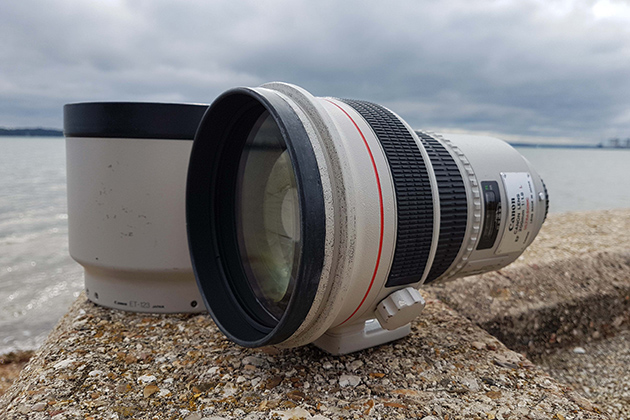Molly Hollman
Pentax SMC Pentax-M 50mm F1.7
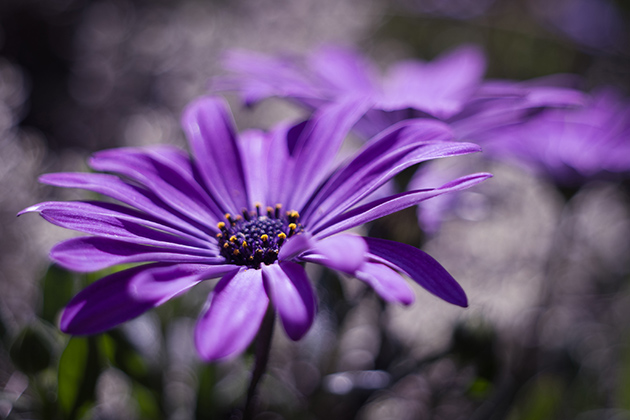
Molly has used second-hand lenses as a way of refining her manual focus technique. 1/500sec at f/1.7, ISO 100. Credit: Molly Hollman
My first DSLR was a Pentax K-r and I chose Pentax as I previously had Pentax film cameras in the past and loved the lenses. However, I foolishly sold my lenses with my Pentax film camera and when starting out with digital had very little budget remaining after buying the camera. I found some manual vintage lenses on eBay, having meticulously read reviews on the Pentax lens forum. The two I started with were the SMC Pentax-A 50mm F1.7 and the SMC Pentax-M 50mm F1.7 – although I confess it took a while to get used to focusing manually.
Both lenses are truly amazing. I’m rather a bokeh addict and they give the creamiest backgrounds and the most glorious colours. They suit my preferred genre of flower and nature photography as the aperture is low enough to blur backgrounds beautifully; throwing the subject into focus, but also giving interesting colours and shapes in the background when not wide open. They double up as great portrait lenses too.
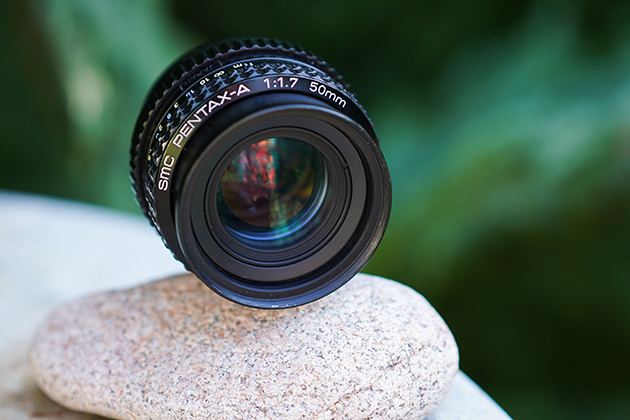
I now have a Sony A7 III with a cheap adapter for the lenses and, if anything, I am using them more – as the Sony ‘manual focus assist’ is brilliant at showing me the area in focus in live view or through the EVF. My ‘hit rate’ is much better than it was previously. I often use them with extension tubes for macro or close-up and because the aperture is manual I have total control when shooting in manual. As well as understanding their strengths, I have learnt to avoid their weaknesses. The six-bladed diaphragm can sometimes give rather hexagonal light circles when shooting scenes with points of light in them, such as trees. When shooting into the light, chromatic aberration can also be traced.
The lenses have taught me a lot with regard to manual focus, and cost me only £40 each. Given that mirrorless cameras do not always have the lightest lenses, these little lenses would be an asset to those downsizing to mirrorless because of weight issues. There are always lots on eBay and I don’t think you can get better glass for the money.
Dave Tucker
Canon EF 70-300mm f/4-5.6L IS USM
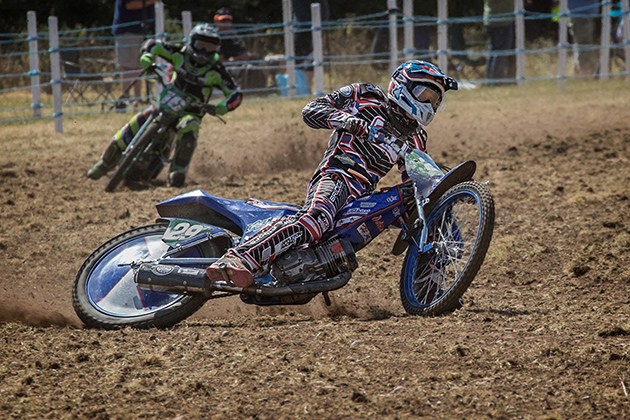
Dave picked up his used lens from MPB.com and managed to save £200 buying it from new. He uses it for a wide variety of subjects and finds it delivers its best results at apertures around f/8. Canon EOS 7D Mark II, 1/1250sec at f/9, ISO 640. Credit: Dave Tucker
I’ve bought a few second-hand lenses over the years, and one of my favourites is the Canon 70-300mm f/4-5.6L IS USM. I traded in my 70-200mm f/4 lens for this beauty and found that the image quality was very impressive indeed, with the bonus of an extra 100mm reach.
I wasn’t concerned with the slightly higher f-stop as I very rarely went below f/4 anyway. MPB had a second-hand one marked as mint condition, which was £200 less than buying new. I snapped it up and have used MPB many times since, as I like the way they give accurate descriptions of their second-hand gear and offer them at very reasonable prices. A few days later I unwrapped what looked to me like a brand-new lens that was fresh off Canon’s production line.
In use, the lens performs superbly with great ergonomics and balance. Although it weighs 1,050g, I find it easy to handhold in almost any conditions and the image quality is pure perfection. I have used it for taking pictures of sports, landscapes, and portraits. It’s an incredibly versatile lens.
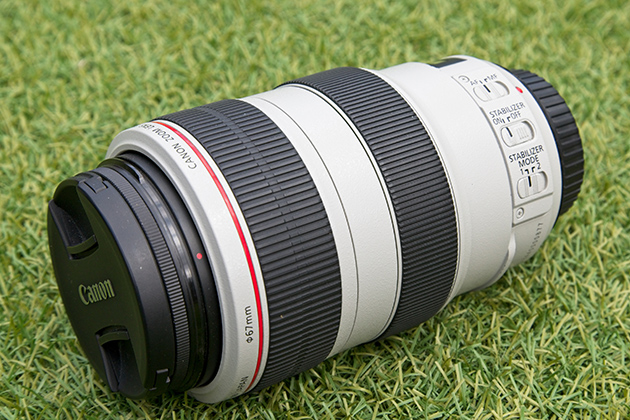
Sharpness is very good throughout the range, though I find f/8 offers the best results on my example. The 67mm front-end takes screw-in filters and does not rotate when zoomed. Performance-wise, the autofocus is both fast and silent and the zoom ring turns precisely without any sign of play. In use, this makes it a doddle to set any focal length both precisely and quickly. Turning the big manual- focus ring at any time gives you instant access to manual-focus override. I like the way you can lock the zoom action closed with a flick of a switch for transport. The easy-to-reach 2-position, 4-stop range Image Stabiliser and manual/autofocus switches are positive to use too.
My advice buying second-hand is simply this: use a reputable company, read the description very carefully and you could easily be walking away with a bargain well below the cost of what you would pay buying new.
Ferry Widjaja
Canon EF 200mm f/1.8L USM

Ferry has travelled all over the world with his used lens, including the temples of Bagan in Myanmar. Canon EOS 5DS R, 1/80sec at f/14, ISO 100. Credit: Ferry Widjaja
Whilst lying in my bed with my wife, I saw an advert for the EF 200mm f/1.8L USM. Even with my limited knowledge about this lens, having only read reviews from the internet, I managed to explain how great it was, and she agreed to me purchasing it.
A few days later, the lens arrived. Considering its age, being manufactured in December 1992, the overall condition was good. It had some specks of dust inside the barrel, but no scratches or fungus was found. And after taking some photos around my house, I was happy with my purchase.
The real experience though started when I took this lens to Chiang Mai in Thailand, where I found that the f/1.8 was extremely helpful for keeping ISO levels low and shooting with fast shutter speeds.
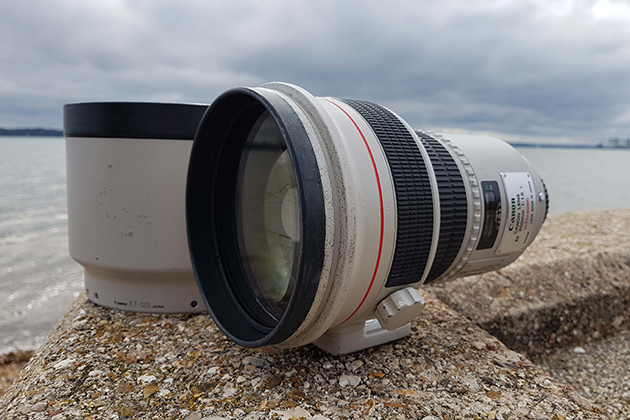
My only issue with the lens is its hood. I took the lens to the North of Chiang Mai, to one of the hill tribe villages, and the hood fell off. I quickly realised, while trying to reattach the hood, that I lost one of the screws. Without the screw, it was impossible to reattach the hood back onto the lens. Although I did find the screw, its poor design meant it was still wobbly.
Putting that aside, this lens has quickly become a staple in my kit; the colour, contrast, and bokeh are absolutely mind-blowing. The lens is not only amazing for portraits, it’s also great for landscapes, and macro photography with extension tubes. I’d say it’s in the premier league of lenses and has been worth every penny of the initial outlay.
Craig Morgan
Tamron Adaptall-2 28mm f/2.5
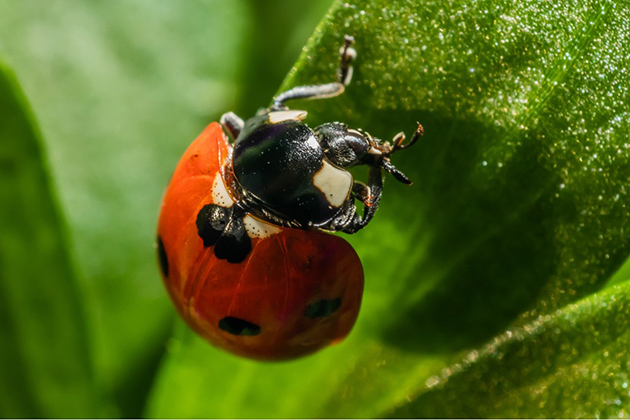
Craig enjoys the challenges that come with using a lens in reverse for his close-up images of insects. Canon EOS 80D, 1/250sec at f/16, ISO 200. Credit: Craig Morgan
When my interest in photography first started six years ago, I bought everything new and each lens I bought had to have Canon’s famous red ring. After many pounds spent and lost on selling and trading in for other lenses, it finally feels like the contents in my camera bag have settled down.
My lens collection is now a modest three lenses, with two of them purchased used and one that doesn’t even fit my camera! The lens in question is the Tamron Adaptall-2 28mm f/2.5. Purchased in great condition for under £40 on eBay, it is my choice for close-up macro. I specifically bought it so I could use it in reverse with a suitable adapter ring for photographing insects. There’s nothing new about this method of course, but the 28mm focal length gives me 3x magnification on my subjects.

It’s a fully manual lens so shooting macro at a fixed f/16 aperture while looking through the viewfinder is rather difficult, so I find myself using live view and my camera’s tilting screen for this technique, with focus being achieved by physically moving the camera back and forth. After owning dedicated 1:1 macro lenses, some might deem it strange to finally settle for a cheap used bare-bones lens, but I just find it more of a challenge this way. It’s also definitive proof that buying used has its perks, can save you money against new and as long as you look after your used gear, you can usually get back what you originally paid for it if you decide to sell it on.
John Harrison
Zeiss Planar T* 50mm f/1.4 ZE

John wasn’t put off by cosmetic signs of wear or dust inside the barrel when he bought his Zeiss lens. Canon EOS 5D Mark III, 1/25sec at f/1.8, ISO 400. Credit: John Harrison
I’d been a great fan of the ‘nifty fifty’ approach to candid shooting for a while and I loved the versatility of my cheap Canon EF 50mm f/1.8. Then there came the inevitable point where the picture quality produced by this lens just wouldn’t cut it, and it was at this point that the weeks of research into better-quality glass and f1.4/1.2s began. I’d heard lots of good things about Zeiss lenses. Undeniably the image quality is excellent with tremendous edge-to-edge sharpness, colour reproduction and brilliant handling. The biggest draw was the manual-only focus mechanism. Obviously this means the lens is not really suited to sports/wildlife, etc. but with proper consideration of DoF and hyperfocal distance, great results are possible. The point being that going for a manual-focus lens forced me to think much more about my shooting than I ever had before.
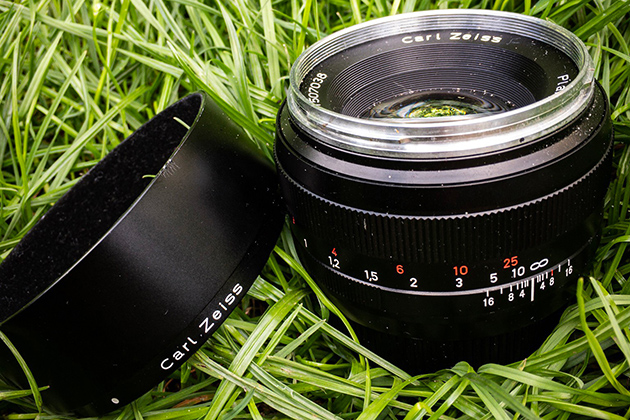
Second-hand lenses can be a bit of a minefield and there are certainly many sellers online who are maybe less than transparent when it comes to the inner quality of the lens. Ascertaining quality from screen images is very difficult so we tend to rely on the seller’s judgement. There are reputable second-hand retailers who have good return policies to give a little added confidence, and it was from one of these that I purchased my lens. The description read along the lines of ‘used with some cosmetic signs of wear and some dust inside the barrel not affecting lens quality’. The ‘cosmetic signs of wear’ amounted to two small scratches.
As for the dust, I couldn’t make it out and there was definitely nothing noticeable in any of my images. Cosmetic wear can be a sign of rough use; however my experience has often been that this is simply a sign that the lens has been used. Significant outer wear can suggest issues with focus rings/element housing, but this is something that would be made known by a reputable reseller. I think we can get a little hung up on the exterior condition of camera equipment and have to remember that everything in photography is simply a tool. Ultimately, it’s the photographer who produces the final image.
Richard Sibley
Nikon 50mm f/1.4 NIKKOR-S Auto
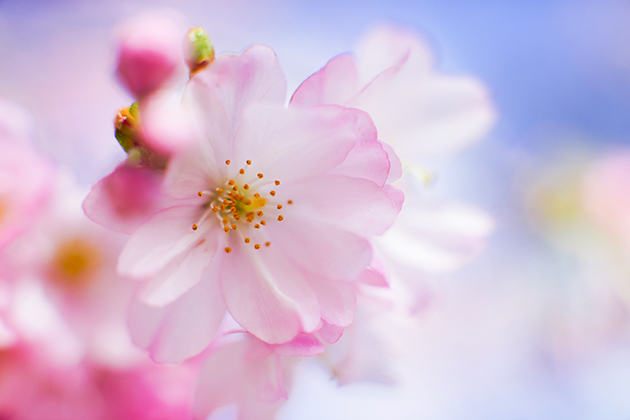
Richard’s lens dates back to 1967. He often pairs it with extension tubes to create his macro images. Sony A7R, 1/1000sec at f/1.4, ISO 200. Credit: Richard Sibley
When I saw the Nikon 50mm f/1.4 NIKKOR-S Auto lens on the shelf in the camera store for just £80, I knew I had to have it. Going by the serial number, my copy dates from around 1967 – and it certainly looks like a lens that is more than 50 years old. I often wonder where this lens has travelled and what it has photographed? There is always a chance it may have taken an iconic image, or equally that it may have been unloved in the back of someone’s cupboard for a few decades.
I’ve used this lens on so many different camera bodies. It was a regular feature on my Nikon D300 and many other Nikon DSLR cameras, but it now pairs nicely with my Sony A7R. I also love using it on Fujifilm cameras, where the vintage looks pair perfectly with the style of the Fujifilm X-T cameras.
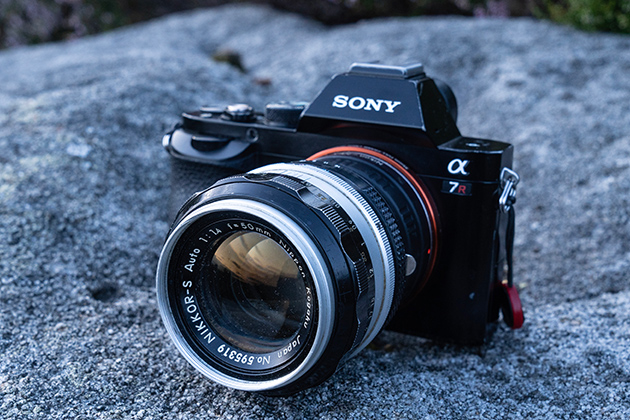
The lens does show its age – the focus ring is lovely to handle, although a little loose, and the aperture ring is a little stiff in places, but everything still works, and this was reflected in the price. Compared to a modern lens, my 50mm f/1.4 lens completely lacks contrast at f/1.4, which makes the lack of sharpness even worse. Throw in some lens flare when shooting into light and you’d wonder why I love it so much – there is certainly something to be said for modern lens coatings! However, at f/8 it can almost match the sharpness of its modern equivalent and is super-sharp.
But the reason I love the lens is because of those flaws. I’ll shoot at f/1.4 and use the washed-out colours, soft images and lens flares creatively. I’ll sometimes even throw a set of extension tubes on and use it as a macro lens. This lens is fun because it challenges me to shoot and think differently, and that alone has been worth a lot more than £80.
Matt Jerrams
Zeiss Planar T*45mm f/2
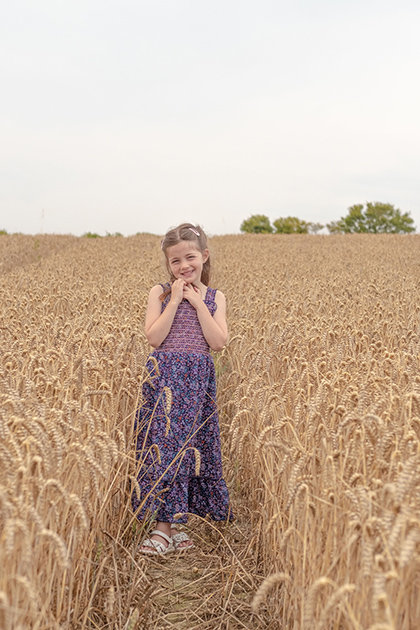
Matt regards his second-hand Zeiss lens as the sharpest optic in his kitbag. Fujifilm X-Pro2, 1/1600sec at f/4, ISO 320. Credit: Matt Jerrams
It wasn’t until 2012 that I bought my first digital camera, a Fujifilm X-Pro1. Upon release, there were only three lenses available, so I decided to scour the used-lens market to see what I could adapt for my needs. Back then, all manual focus or obsolete glass was pretty cheap, as the mirrorless concept was still pretty new. I managed to bag the Zeiss 45mm f/2 Planar for a mere £80. You see them on auction sites for well over £300 today. With a crop factor of 1.5x, the 45mm was a portrait perfect 67.5mm. I wouldn’t be telling the truth if I told you I used it often. I really don’t, but I still regard it as the sharpest lens I own – and a few other online bench testers remark that it is one of the sharpest optics ever manufactured.
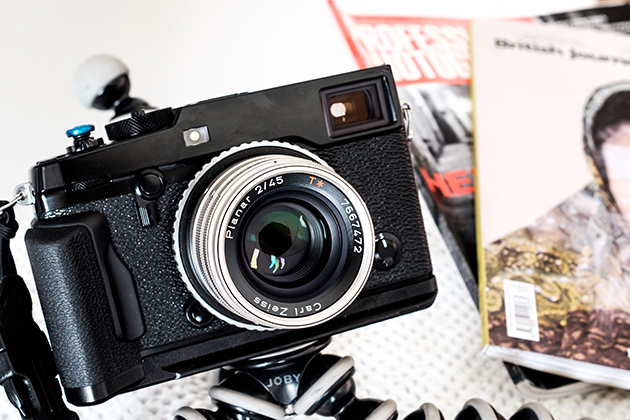
The problem lies with manual focus – the adapters feature a focus ring that is almost flush to the camera body and it is very tricky to be totally accurate, even with a ‘focus assist’ feature. There is no depth of field indicator either. Having said that, once you get used to it, it’s worth persisting with. It really does add a beautiful warm colour palette in addition to its extraordinary sharpness. I used it very recently, for a picture of my goddaughter in a cornfield. These days it’s mainly attached to my much-loved Contax G1.

